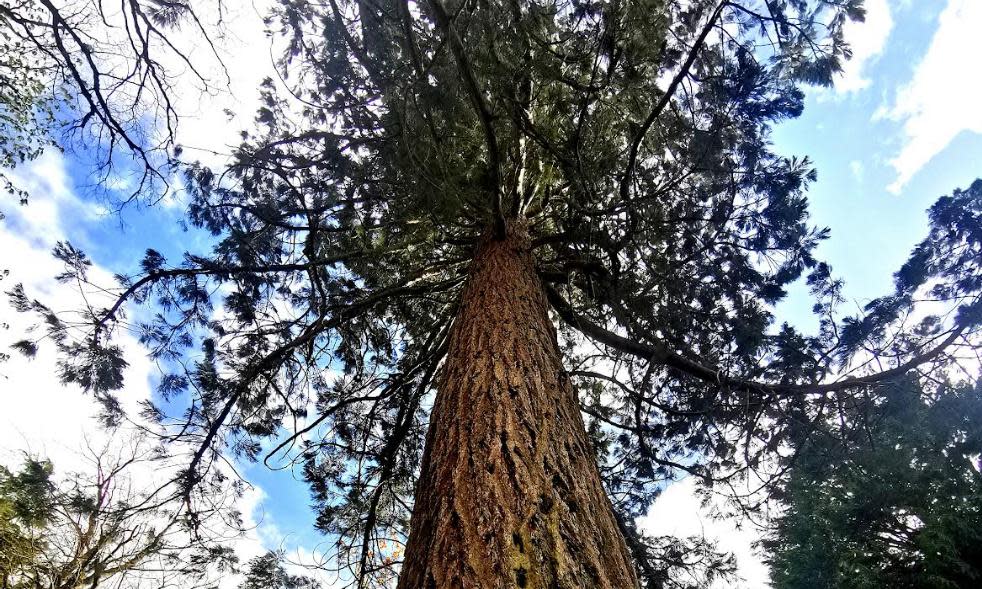Country diary: Standing in the shadow of a giant

As a young boy, my copy of Strange But True contained fascinating photographs of a coach and horses and a Model T Ford driving through a hole in an enormous sequoia. Recently, these monsters have been in the news due to the number of sequoias, or giant redwoods, in the UK – about 500,000 here, compared with only about 80,000 in California, where the species is endangered after being used in construction for two centuries.
I was reminded of a very large tree on my patch in Galloway, at the Crichton Campus in Dumfries. I have photographed the monster previously, thinking it a large cedar, but it is indeed one of our stock of Sequoiadendron giganteum (note the clue in the name), introduced to Britain’s country gardens and large estates in the 18th and 19th centuries. This specimen was planted in the early 1850s with seeds from the Lobb brothers, plant collectors who also introduced the monkey puzzle tree here.
At 30 metres high and 11 metres wide, it is just about small enough to hug, but it would be dwarfed by the mighty Hyperion, the tallest known living tree in the world (and a coastal redwood, which are generally taller but thinner than the sequoia), standing at about 115 metres and aged between 600 and 800 years.
On returning to the tree, I was buzzed by chiffchaffs, willow warblers and a very vocal song thrush. To stand beneath it is humbling, not only because it is huge but because it will keep on growing and still be standing hundreds of years after I have departed. And up close they’re fascinating too: deeply grooved brown and red bark to protect them from the elements and wildfires, and branches that form a cone-like canopy, drooping lower down with their characteristic upturned ends.
The head gardener, Gary, shows me an early plan of the grounds. The tree is listed as “No 14”, in excellent condition, and with the additional designation of “Wellingtonia” – an old English name given to the species following the death of the Duke of Wellington. A passing dog walker also names it after a towering cultural figure, though one of a more distinctly Scottish flavour. “That’s Billy,” he says. “Why Billy?” I ask. “It’s the Big Yin.”
• Country diary is on Twitter at @gdncountrydiary

 Yahoo News
Yahoo News 